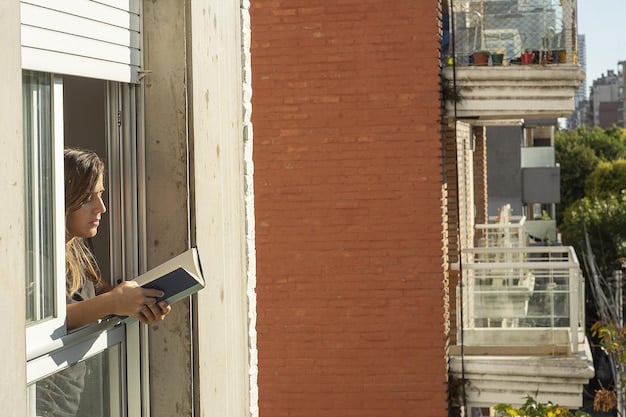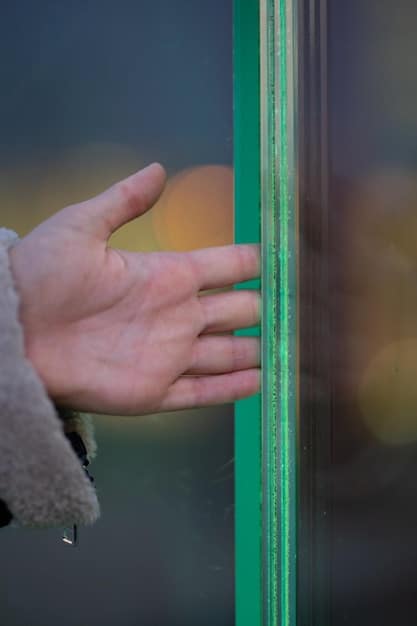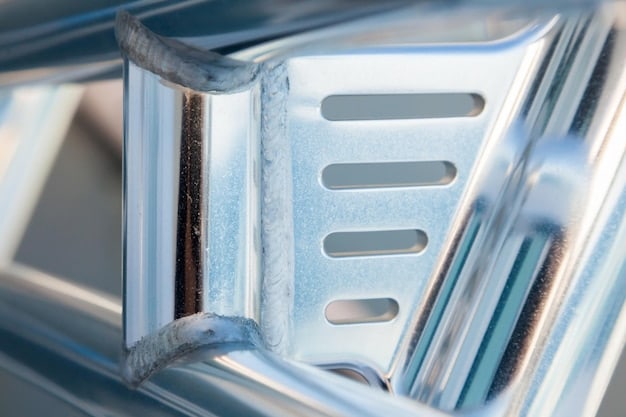Energy-Efficient Windows: Reduce Heat Loss by 40% & Save Money

Energy-efficient windows utilize cutting-edge technologies like low-E coatings and gas fills to significantly reduce heat loss, potentially lowering energy bills for US homeowners by up to 40% while enhancing comfort and sustainability.
Are you looking for ways to save money on your energy bills and make your home more comfortable? Energy-efficient windows can be a game-changer. New technologies are making these windows more effective than ever before, reducing heat loss and saving US homeowners a significant amount of money.
Understanding Energy-Efficient Windows
Energy-efficient windows are designed to minimize heat transfer between the inside and outside of your home. This means keeping your home warmer in the winter and cooler in the summer, all while using less energy. But what makes them so effective?
These windows utilize a combination of advanced materials and innovative designs to achieve superior insulation and performance.
Key Components of Energy-Efficient Windows
Several key components contribute to the energy efficiency of modern windows. Understanding these components is crucial for making informed decisions when upgrading your home.
- Low-E Coatings: These coatings reduce the amount of infrared and ultraviolet light that can pass through the glass, minimizing heat gain in the summer and heat loss in the winter.
- Gas Fills: Inert gases like argon or krypton are used between the panes of glass to provide better insulation than air alone.
- Multiple Panes: Double- or triple-paned windows create air pockets that further impede heat transfer.
- Improved Frame Materials: Materials like vinyl, fiberglass, and wood offer better insulation than traditional aluminum frames.

By understanding these components, homeowners can appreciate the technology behind energy-efficient windows and make smarter choices for their homes. Investing in these windows is not just about saving money; it’s also about creating a more comfortable and sustainable living environment.
The Science Behind Heat Loss Reduction
The primary goal of energy-efficient windows is to reduce heat loss. To understand how they achieve this, it’s essential to delve into the science behind heat transfer.
Heat can be transferred through three main mechanisms: conduction, convection, and radiation. Energy-efficient windows address all three of these mechanisms to minimize heat loss.
Conduction, Convection, and Radiation
Understanding the different ways heat can escape from your home is key to appreciating the effectiveness of energy-efficient windows.
- Conduction: Heat transfer through a material. Energy-efficient windows use materials with low thermal conductivity to minimize conduction.
- Convection: Heat transfer through the movement of fluids (like air). Multiple panes and gas fills reduce convection by limiting air movement between the panes.
- Radiation: Heat transfer through electromagnetic waves. Low-E coatings reflect infrared radiation, reducing heat loss and gain.
These windows are meticulously engineered to combat each form of heat transfer, making them a powerful tool for reducing energy consumption in homes across the US.
Beyond the individual components, the overall design and manufacturing process plays a crucial role in minimizing heat loss. Proper installation and sealing are also essential to prevent drafts and air leaks that can compromise the window’s performance.
New Technologies in Energy-Efficient Windows
The field of energy-efficient windows is constantly evolving, with new technologies emerging to further improve their performance. Here are some of the latest advancements.
These innovations are pushing the boundaries of what’s possible in terms of energy efficiency and comfort.
Dynamic Glazing and Smart Windows
Dynamic glazing, also known as smart windows, can automatically adjust their tint based on sunlight and temperature, further reducing heat gain and glare.
These windows can also be controlled manually, allowing homeowners to customize their level of shading and privacy.
The adoption of dynamic glazing is still relatively limited due to higher costs, but as the technology matures, it is expected to become more widespread.
Vacuum Insulated Glass (VIG)
VIG technology involves creating a vacuum between two panes of glass, providing even better insulation than gas fills. This dramatically reduces conductive heat transfer.
VIG windows are particularly effective in extreme climates, where energy savings can be substantial.

These ongoing innovations promise to make energy-efficient windows even more effective in the years to come, offering homeowners even greater potential for energy savings and enhanced comfort.
Cost Savings for US Homeowners
One of the biggest benefits of energy-efficient windows is the potential for significant cost savings on energy bills. While the initial investment may seem daunting, the long-term savings can be substantial.
Numerous studies and real-world examples demonstrate the financial benefits of upgrading to energy-efficient windows.
Calculating Your Potential Savings
The amount of money you can save by upgrading to energy-efficient windows depends on several factors, including the climate you live in, the size of your home, and the type of windows you currently have.
Online calculators and energy audits can provide a more personalized estimate of your potential savings.
- Climate: Regions with more extreme temperatures will see greater savings.
- Home Size: Larger homes with more windows will have higher energy costs and greater potential for savings.
- Window Type: Replacing single-pane windows with energy-efficient models will result in the most dramatic savings.
It’s important to remember that energy savings are just one of the benefits of upgrading your windows. Increased comfort, reduced noise, and enhanced home value are also significant advantages.
Government Incentives and Rebates
To encourage the adoption of energy-efficient technologies, the US government and many state and local governments offer incentives and rebates for homeowners who upgrade to energy-efficient windows.
These incentives can help offset the initial cost of upgrading your windows, making it even more affordable.
Federal Tax Credits and State Programs
Take advantage of the financial help available to reduce the cost of upgrading to energy-efficient windows.
- Federal Tax Credits: Check the IRS website for information on current tax credits for energy-efficient home improvements.
- State Rebates: Many states offer rebates for installing energy-efficient windows. Check with your state energy office for details.
- Local Programs: Some cities and counties also offer incentives for energy-efficient upgrades. Contact your local government for information.
By taking advantage of these incentives, homeowners can significantly reduce the out-of-pocket cost of upgrading to energy-efficient windows, making it a more attractive investment.
These incentives not only benefit homeowners but also contribute to a more sustainable and energy-efficient future for the country as a whole.
Choosing the Right Windows for Your Home
Selecting the right energy-efficient windows for your home requires careful consideration of several factors, including your budget, climate, and aesthetic preferences.
It’s essential to do your research and compare different types of windows and features before making a decision.
Factors to Consider When Choosing Windows
A window’s energy efficiency isn’t the only thing to consider when selecting it for your home.
- Energy Performance Ratings: Look for windows with high Energy Star ratings and low U-factors (which measure heat transfer).
- Frame Material: Choose a frame material that offers good insulation and durability. Vinyl, fiberglass, and wood are all good options.
- Window Style: Consider the style of your home and choose windows that complement its architecture.
By taking the time to carefully evaluate your options, you can choose the windows that are best suited to your needs and budget and that will provide years of energy savings and comfort.
Always consult with a qualified window installer to ensure that your new windows are properly installed and sealed. Proper installation is essential for maximizing energy efficiency and preventing drafts and air leaks.
| Key Point 🔑 | Brief Description |
|---|---|
| 💰 Cost Savings | Reduce energy bills by up to 40% with efficient windows. |
| 🌡️ Heat Loss Reduction | New tech like low-E coatings minimize heat transfer. |
| 🏠 Home Value | Energy-efficient upgrades can increase property value. |
| ✅ Government Incentives | Tax credits and rebates are available for upgrades. |
Frequently Asked Questions (FAQ)
▼
Energy-efficient windows use multiple panes of glass, gas fills, and low-E coatings to minimize heat transfer through conduction, convection, and radiation, thereby reducing heat loss.
▼
Low-E coatings are thin, transparent layers applied to the glass surface that reduce the amount of infrared and ultraviolet light that passes through, minimizing heat gain in summer and heat loss in winter.
▼
Savings vary based on climate, home size, and current window efficiency. However, many homeowners can save up to 40% on their energy bills by upgrading to energy-efficient windows.
▼
Yes, the US government and many state and local governments offer tax credits, rebates, and other incentives for homeowners who install energy-efficient windows. Check your local and federal programs.
▼
Double-pane windows have two layers of glass, while triple-pane windows have three. Triple-pane windows offer even better insulation and noise reduction but are typically more expensive than double-pane options.
Conclusion
Investing in energy-efficient windows can significantly decrease heat loss, potentially lowering energy bills by up to 40% for US homeowners. With advancements like low-E coatings, gas fills, and government incentives, these windows offer a powerful path towards sustainability and comfort.





